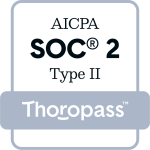In the fast-paced world of healthcare, managing appointments efficiently is crucial for healthcare providers and patients. Late cancellations and no-shows can disrupt the flow of a medical practice, leading to wasted resources and diminished quality of care. One innovative solution that has emerged to tackle this challenge is Visual Interactive Voice Response (Visual IVR). In this blog post, we’ll explore how Visual IVR technology can help lower late cancellations and why it is imperative for medical practices to address this issue.
Understanding Late Cancellations and No-Shows
Late cancellations and no-shows have been persistent issues in the healthcare industry, causing schedule disruptions and financial losses for medical practices. Patients may cancel appointments for various reasons, including unpreparedness, transportation issues, or conflicting commitments. These cancellations can be particularly problematic for specialized practices where time slots are limited, and each appointment is crucial.
The Impact of Late Cancellations
- Financial Implications: Late cancellations and no-shows result in financial losses for medical practices. Unfilled appointments mean wasted resources and missed opportunities to generate revenue.
- Disruption of Workflow: Medical practices operate on tight schedules, and unexpected cancellations can disrupt the entire workflow. This can lead to longer wait times for other patients and increased stress for healthcare providers and staff.
- Reduced Patient Access: Late cancellations limit the availability of appointments, making it challenging for patients to access the care they need promptly. This can negatively impact patient satisfaction and overall healthcare outcomes.
Visual IVR: A Solution to Reduce Late Cancellations
Visual IVR combines the efficiency of Interactive Voice Response (IVR) systems with visual interfaces, offering a user-friendly experience for patients. Here’s how Visual IVR can contribute to lowering late cancellations:
- Appointment Reminders: Visual IVR can send patients timely and personalized appointment reminders through visual channels such as text messages or emails. This is a proactive measure to reduce forgetfulness and ensure patients know about their upcoming appointments.
- Easy Rescheduling: If a patient needs to cancel or reschedule, Visual IVR provides an intuitive platform for them to manage their appointments easily. Through visual prompts, patients can navigate the rescheduling process efficiently, reducing the likelihood of last-minute cancellations.
- Increased Patient Engagement: Visual IVR engages patients more interactively than traditional methods. By incorporating visuals and user-friendly interfaces, patients are more likely to participate actively in managing their appointments, fostering a sense of responsibility and commitment.
- Efficient Communication: Visual IVR facilitates seamless communication between patients and healthcare providers. Patients can communicate any issues or conflicts that may lead to a cancellation, allowing the practice to address concerns and potentially prevent cancellations.
The Importance of Decreasing Late Cancellations
- Optimized Resource Utilization: Reducing late cancellations allows medical practices to optimize resources by ensuring that appointments are filled, and healthcare providers are utilized efficiently.
- Improved Patient Experience: A well-managed appointment system enhances the overall patient experience. Patients appreciate the convenience and reliability of a medical practice that values their time and offers easy-to-use tools for appointment management.
- Financial Stability: Decreasing late cancellations contributes to the financial stability of medical practices. With fewer gaps in the schedule, practices can maximize revenue and invest in improved patient care services.
Conclusion
Visual IVR represents a significant advancement in healthcare technology, providing medical practices with a powerful tool to address the challenges posed by late cancellations and no-shows. By leveraging the benefits of Visual IVR, medical practices can enhance patient engagement, streamline appointment management, and ultimately reduce the negative impact of late cancellations on both operational efficiency and patient satisfaction. Embracing innovative solutions like Visual IVR is a step towards building a more resilient and patient-centric healthcare system.






